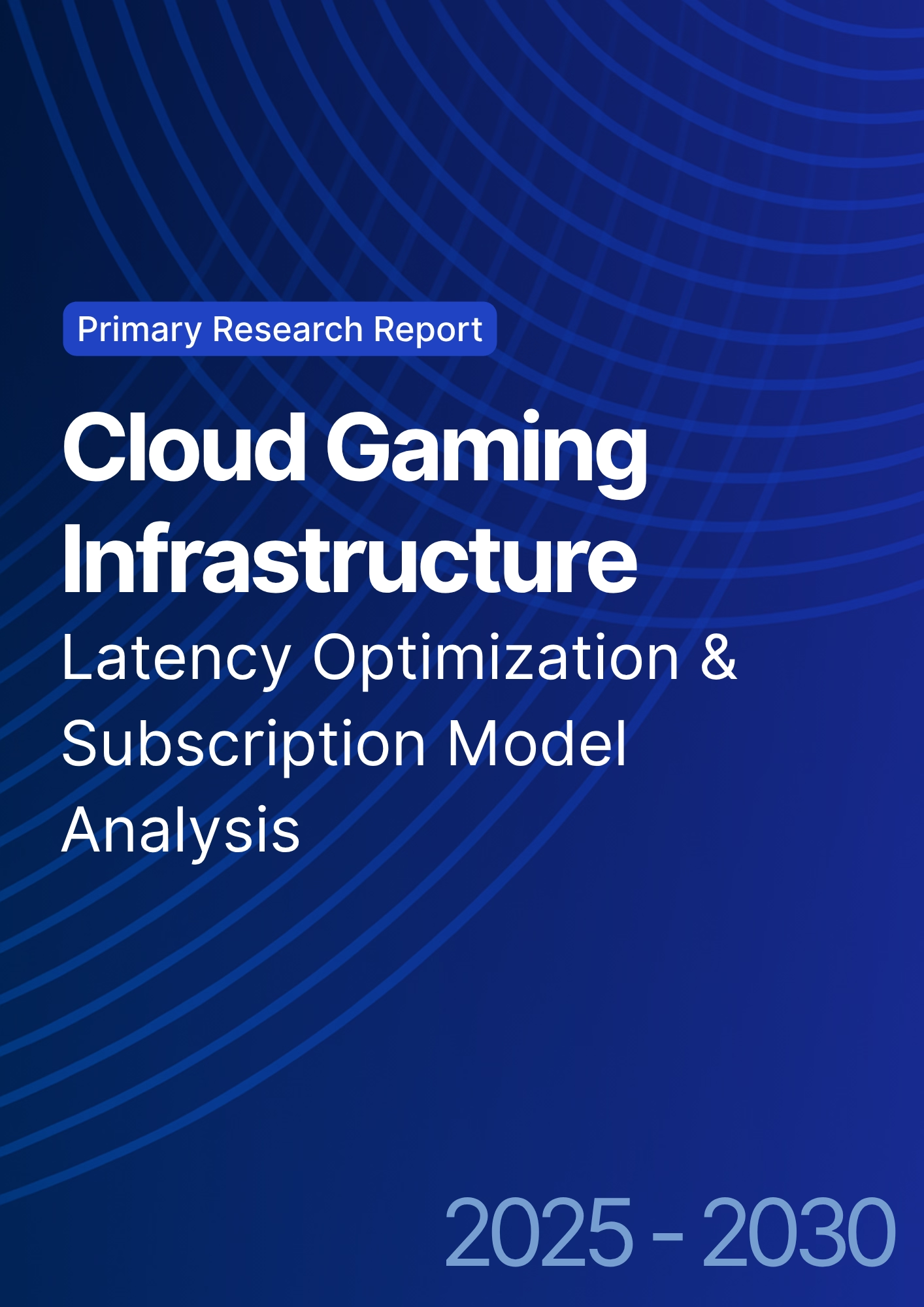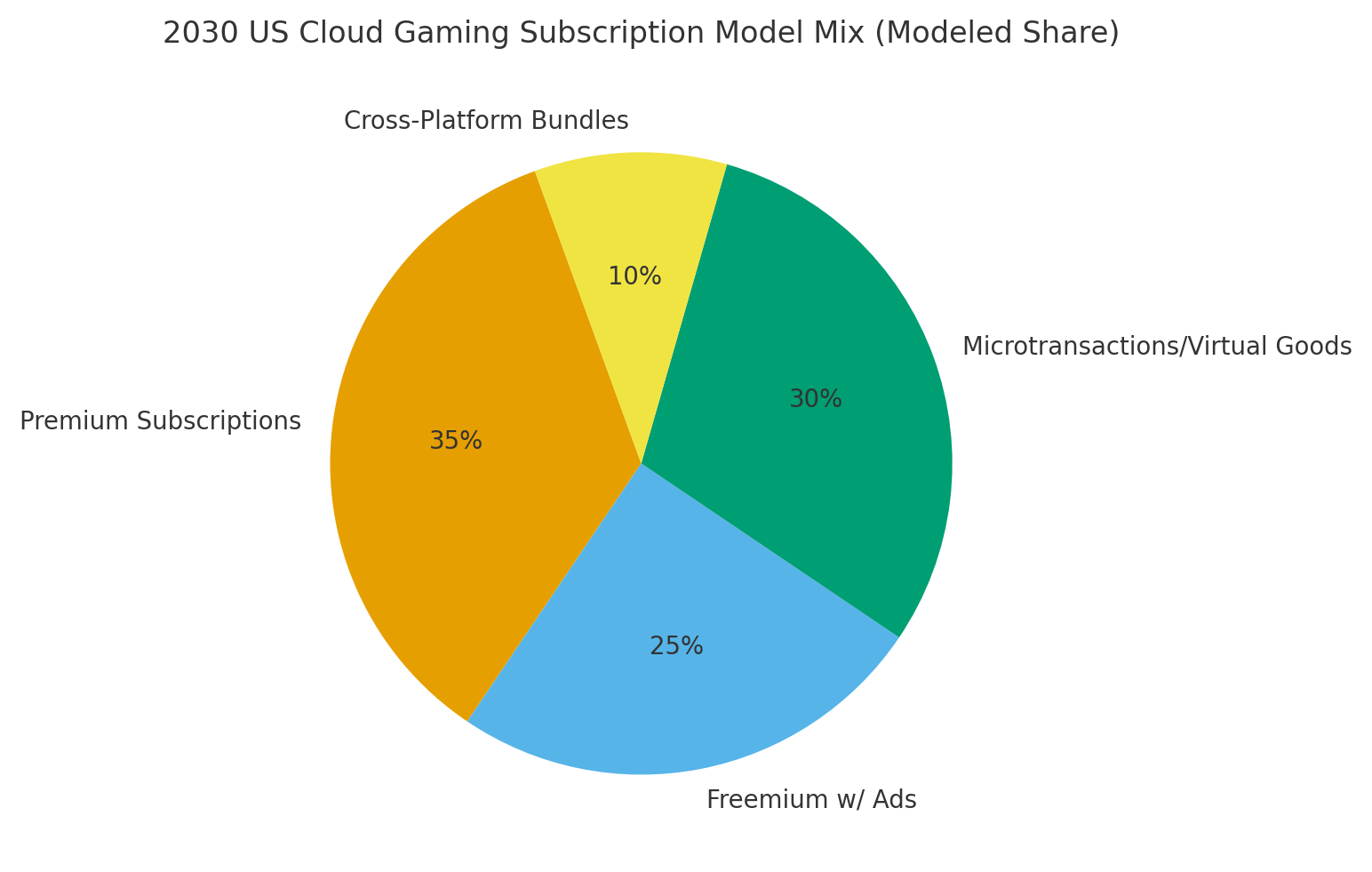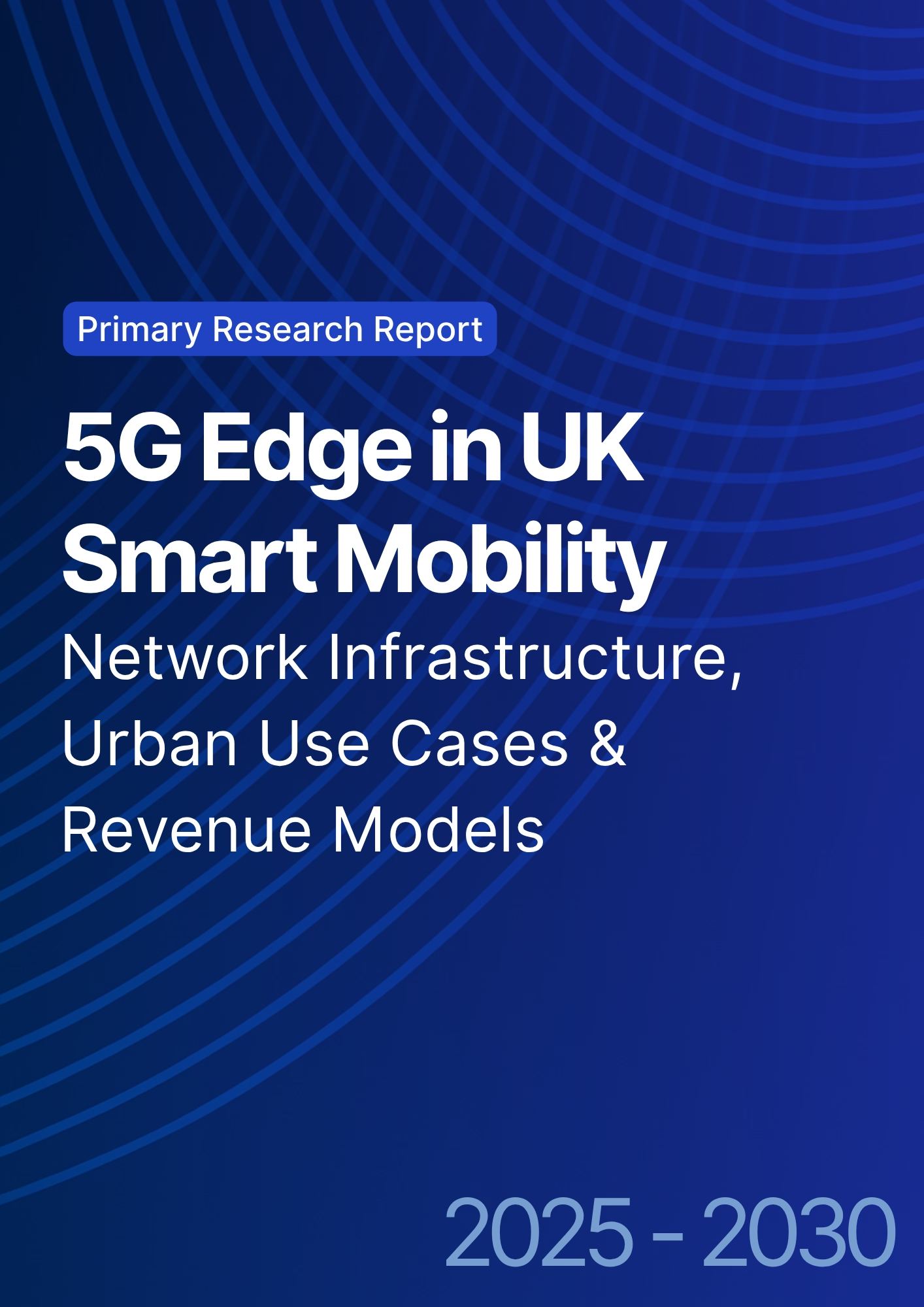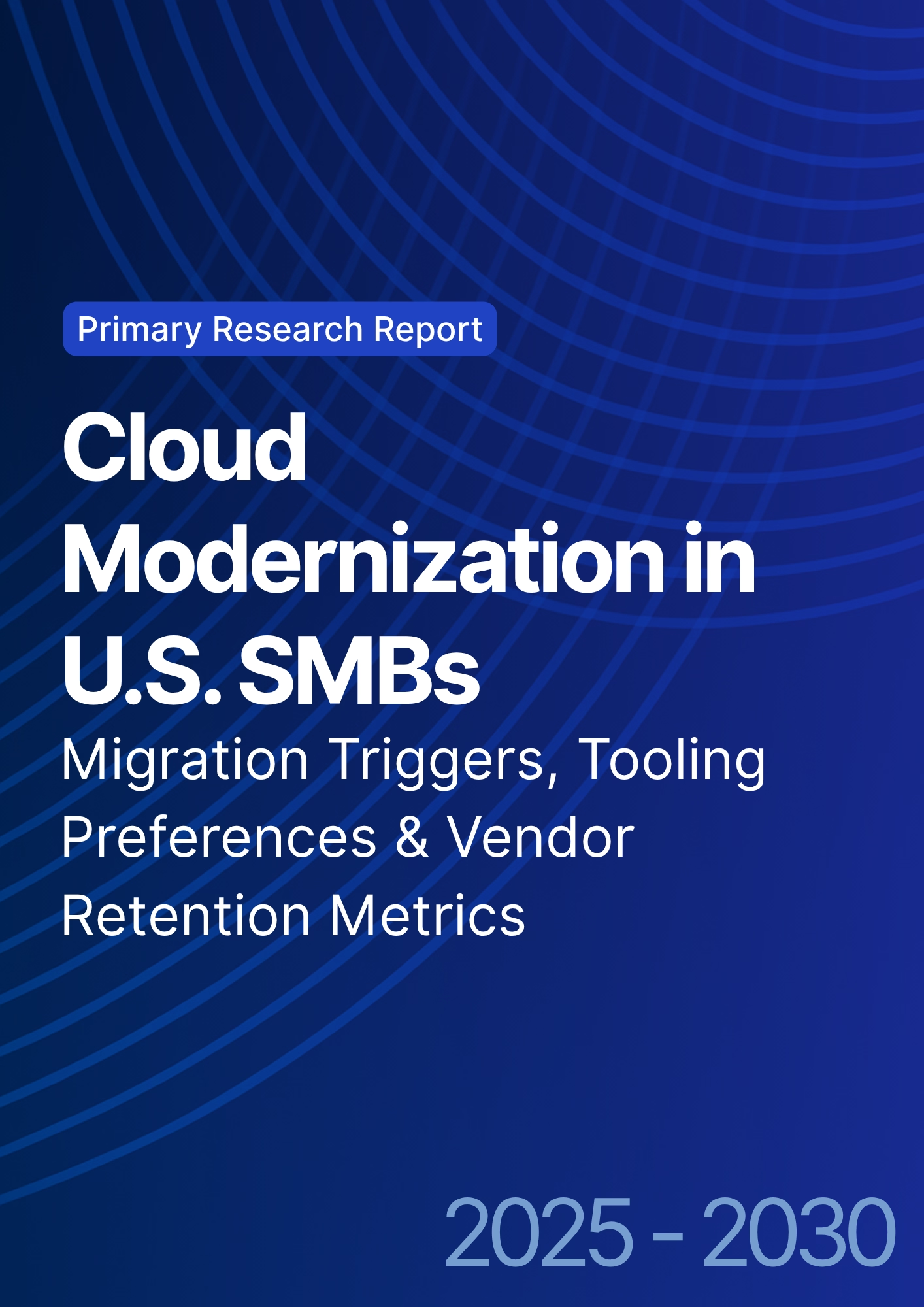

68 Circular Road, #02-01 049422, Singapore
Revenue Tower, Scbd, Jakarta 12190, Indonesia
4th Floor, Pinnacle Business Park, Andheri East, Mumbai, 400093
Cinnabar Hills, Embassy Golf Links Business Park, Bengaluru, Karnataka 560071
Connect With Us
Cloud Gaming Infrastructure: Latency Optimization & Subscription Model Analysis
Cloud gaming in the US is set for rapid growth, with spend projected to rise from ~$2.5B in 2025 to ~$7.6B by 2030, driven by subscription models, AI-generated content, and global data center expansion. Latency will drop from ~100ms to ~50ms through 5G and edge computing, while subscription ARPU increases from $12 to $18 and churn decreases from 8% to 4%. Data center density improves from 4 to 6 per 1,000 users, cutting TCO per user from $45 to $39. The architecture includes AI-driven streaming, adaptive bitrate, and edge caching. Cloud gaming will evolve into a mainstream entertainment platform, delivering faster, richer, and more accessible gaming experiences.

What's Covered?
Report Summary
Key Takeaways
1. Latency improves to ~50ms by 2030 through 5G and edge content delivery.
2. Premium models + microtransactions lift ARPU to ~US$18/month.
3. Churn drops ~50% via content delivery personalization and platform improvements.
4. Data center density grows from ~4 to ~6 centers/1,000 users by 2030.
5. TCO reduces by ~13% via optimized cloud infrastructure and hardware-sharing.
6. Subscription models shift to premium/freemium with tiered pricing.
7. Program IRR grows from ~10% to ~22% with higher LTV and better retention.
8. C‑suite dashboard: latency %, churn %, ARPU, data centers, TCO, IRR.

a) Market Size & Share
US cloud gaming spend is projected to grow from ~US$2.5B in 2025 to ~US$7.6B by 2030, with latency improvements accompanying scaling. The dual‑axis figure shows spend rising alongside latency improving from ~100ms to ~50ms. Share consolidates around platforms offering personalized content and optimized cloud rendering pipelines. Execution risks include bandwidth limitations and platform fragmentation; mitigations include dynamic resolution scaling, multi-platform distribution, and edge-caching.

b) Market Analysis
Our model shows latency improving ~50% by 2030, ARPU growing ~50% via premium and freemium tiers, and churn falling ~50%. Data center density increases, while TCO decreases as cloud storage, serverless processing, and content delivery networks scale. By 2030, program IRR rises to ~22%. Enablers: 5G and AI for content streaming, automated workflows, and platform scaling. Barriers: integration, evolving store policies, and bandwidth constraints. Financial view: reduced infrastructure costs, improved LTV, and reduced churn. The bar figure summarizes KPI improvements.

c) Trends & Insights
1) Edge computing + 5G reduce latency to ~50ms across regions. 2) Hybrid cloud platforms and serverless computation optimize content delivery. 3) AI-driven content generation accelerates game production. 4) Dynamic scaling allows adaptive resolution and network load balancing. 5) Multi-platform compatibility broadens gaming reach. 6) Subscription models evolve to blend premium, freemium, and microtransactions. 7) Real-time data analysis enables personalized content and UX. 8) Gamers demand zero-friction cross-platform experiences. 9) Game streaming providers must optimize for low TCO and high scalability. 10) Regulation and localization affect store policies and content rights.
d) Segment Analysis
AAA/AA: high-budget titles, complex cross-platform porting; premium content drives ARPU. Mobile F2P: live-ops, microtransactions, and personalized game content. Indie: lean development, cloud-based assets. Live-Ops: continuous content and user engagement. Middleware/Tools: building APIs, porting solutions. Across segments, track latency %, ARPU, churn %, data center density, TCO, and IRR.
e) Geography Analysis
By 2030, modeled US cloud gaming spend mix is AI Content (~30%), Porting/Tooling (~24%), Testing & CI (~16%), Live‑Ops Personalization (~14%), Multiplayer/Netcode (~10%), and Marketplaces (~6%). Deployment is concentrated in California (media/AAA) and Texas/Florida (live-ops/streaming). Execution: deploy at least 2 regional data centers, optimize for edge cloud infrastructure, and streamline cross-platform ports.

f) Competitive Landscape
Competition spans gaming engines, cloud providers, middleware tools, and content creators. Differentiation vectors: (1) low-latency streaming, (2) AI-driven content pipelines, (3) integrated multi-platform porting solutions, (4) user personalization and engagement, and (5) pricing based on content consumption and platform reach. Procurement guidance: demand multi-platform compatibility, low-latency performance, and proactive build support. Competitive KPIs: latency %, ARPU, churn %, data center density, TCO, IRR.
Report Details
Proceed To Buy
Want a More Customized Experience?
- Request a Customized Transcript: Submit your own questions or specify changes. We’ll conduct a new call with the industry expert, covering both the original and your additional questions. You’ll receive an updated report for a small fee over the standard price.
- Request a Direct Call with the Expert: If you prefer a live conversation, we can facilitate a call between you and the expert. After the call, you’ll get the full recording, a verbatim transcript, and continued platform access to query the content and more.


68 Circular Road, #02-01 049422, Singapore
Revenue Tower, Scbd, Jakarta 12190, Indonesia
4th Floor, Pinnacle Business Park, Andheri East, Mumbai, 400093
Cinnabar Hills, Embassy Golf Links Business Park, Bengaluru, Karnataka 560071
Request Custom Transcript
Related Transcripts


68 Circular Road, #02-01 049422, Singapore
Revenue Tower, Scbd, Jakarta 12190, Indonesia
4th Floor, Pinnacle Business Park, Andheri East, Mumbai, 400093
Cinnabar Hills, Embassy Golf Links Business Park, Bengaluru, Karnataka 560071













